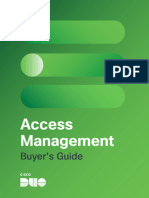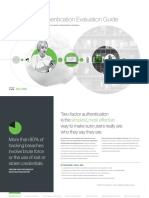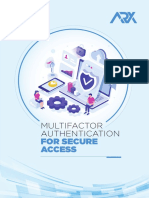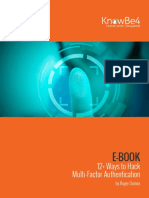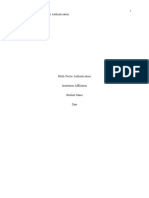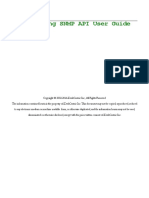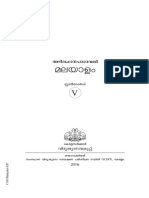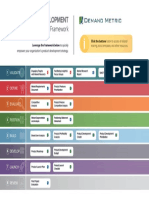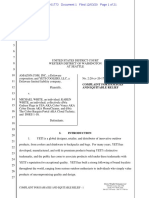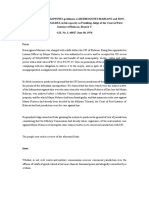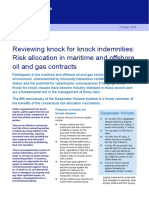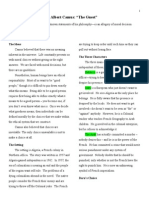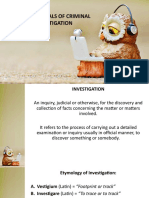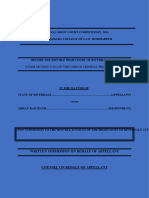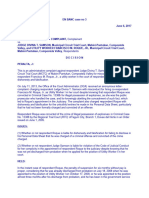A NETIQ FLASH POINT PAPER
Multifactor authentication:
Removing risk while
simplifying processes
Passwords are
deadagain
The old way of thinkingusing username
and password to authenticate usersjust
isnt working any more. Why? There are
several reasons. Users are careless with
passwords. They choose ones that are
obvious; they use the same password
for every situation that requires one; and
often times they even write them down
at their desk. But it isnt all user error.
With username and password being
the only requirements for access, youre
providing hackers with an authentication
model that theyre used to cracking.
Savvy criminals write advanced
algorithms to find ways of entry. Then,
when the same password is used across
multiple situations, a hacker who has
breached your security can make their
way into other levels of access. Imagine: A
hacker steals one of your users Facebook
passwords and in doing so obtains access
to your entire corporate infrastructure.
The bottom line? With username and
password, the entire authentication
transaction is based on something a user
has to know. And that something can be
captured or stolen.
The conversation has shifted
to multifactor authentication
(MFA)
As the name suggests, MFA combines
multiple identity sources as a means
of access. But not just several identity
sources. The best ones combine different
types of identity sources. In the ideal
situation, MFA combines two out of
three things: Something you know, for
example a PIN code, with something
physical that you have, such as a key card
or a token, and something you are, such
as a fingerprint, a retina scan, or voice
recognition. By requiring two of these
three identity sources, you greatly reduce
the risk of security breach.
CONDITIONS THAT
MIGHT DRIVE
THE DECISION
TO IMPLEMENT
MULTIFACTOR
AUTHENTICATION:
Mandates
Breach
Technology/
infrastructure update
�A NETIQ FLASH POINT PAPER
The best MFA relies on responses to
at least two of the following factors:
Something you know
Something you have
Something you are
Technically, when your bank asks you
for your PIN and also for your social
security number, that may seem
like MFA because it is two separate
identity sources (one from the
bank, one not from the bank). And
while that may be true, it isnt a very
sophisticated scenario, because both
are things that you know.
forms of authentication is inherently
more secure, because it forces
breaches to be location based. It
isnt enough for a hacker to sit in
Eastern Europe and grab usernames
and passwordsthey have to also
be able to acquire (or spoof ) the
thing you have or the thing you are.
Something not easily done.
As a concept,
it isnt new
What is making
MFA a trend?
Its the implementation that is new.
MFA is something most people
already use every day. At an ATM
machine, you physically have a card
and you know your PIN number.
When checking in to most travel
kiosks at the airport, you must both
swipe your credit card (something
you have) and enter the three digits
of your destination city (something
you know) in order to proceed.
Even showing a photo ID in order to
complete a credit card transaction
(where the photo provides the
something you are authentication)
is multifactor.
More and more organizations are
becoming increasingly aware of
the risk and cost associated with
single-factor authentication of online
transactional accounts. Its a costly
trend that can be reversed with MFA,
making electronic payments as quick
and reliable as cash payments.
Its clear why MFA is so valuable. Any
system that requires two separate
Verizons 2013 data breach
report, which pointed
the finger at single-factor
authentication as a primary
culprit in security spills,
reported that 76 percent of
network intrusions in 2012
exploited weak or stolen
credentials .
�A NETIQ FLASH POINT PAPER
Another factor that is leading the
charge for MFA is the onslaught of
new government regulations and
mandates, such as HIPAA. On March
26, 2013, new U.S. Department of
Health and Human Services rules
went into effect, extending HIPAA
security and privacy requirements to
business associateswhich include
contractors, vendors, and service
providers, such as billing companies
that perform services on behalf of a
health care provider or who provide
solutions that integrate with medical
or patient data. With hefty fines for
non-compliance, many organizations
are looking toward MFA to help them
protect access to medical and
patient data.
Last but not least is the fact that
biometric authentication has been
built in to many devices for quite a
while now. With fingerprint scanners
on smartphones and PCs, many
businesses have had the capability to
implement MFA for a while, they just
havent realized it or bothered to do it.
If MFA is so great, why
havent we been using
it all along?
As with most advancements, the
resistance to change is varied.
Most companies arent aware that
they already have the components
necessary for MFA (such as fingerprint
scanners). There is also a concern
about implementing something that
will complicate user experience. Often,
ease of use equates to efficiency,
and organizations are hesitant to
sacrifice workflow for any reason
even security. And lastly, but perhaps
most importantly, in order to get the
full benefit of MFA, you need to set
up and optimize the access system
on the back end. If you cant handle
the information that comes in and
implement it across the system, the
benefits you receive are less than ideal.
Its time to
change the thinking
around MFA
When new technology gets rolled out,
it often fails because nobody thought
through all of the implications. For
MFA, there are several things you need
to consider before you start:
Dont think of authentication as an
ad-hoc acquisition or an embedded
part of one element of your security
system. Think about and establish
your own advanced authentication
policy
Map out all of the places that MFA
is going to be used (do keep in
mind, if MFA is your access policy,
you should probably use it). Try to
eliminate complexity where you
can by making MFA:
Easy to manage. The last
thing you want is to be
managing a bunch of different
authentication systems for
every different system in your
company.
Easy to use. If it is hard to
use, youll get resistance. Very
seriously consider implementing
a single sign-on solution at the
same time. This will preclude
users from having to remember
a bunch of different passwords
or having to re-authenticate for
every system.
�A NETIQ FLASH POINT PAPER
Done right, MFA should actually
make life easier for your users. After
all, swiping your finger across a
scanner and entering a PIN is easier
than remembering a username and
password.
Things to look for in an
MFA vendor
Because implementing MFA is critical
to supporting your security and
productivity initiatives, it needs to
work well with the way your business
operates.
1. Look for solutions that give
1233 West Loop South, Suite 810
Houston, Texas 77027 USA
Worldwide: +1 713.548.1700
U.S. / Canada Toll Free: 888.323.6768
info@netiq.com
www.netiq.com
http://community.netiq.com
2. Dont let yourself get locked
in to a single kind of physical
authentication (in other
words, dont let the hardware
you choose dictate your
authentication philosophy).
3. Look for vendors who develop
to an open framework that is
aggressively updated as new
technologies are launched.
4. And finally, look for vendors
who can make the system easy
for you.
you choice and flexibility in
Worldwide Headquarters
the kinds of authentication
you require as well as how you
apply it.
For a complete list of our offices
in North America, Europe, the
Middle East, Africa, Asia-Pacific
and Latin America, please visit
www.netiq.com/contacts.
Follow us:
NetIQ and the NetIQ logo are registered trademarks of NetIQ Corporation in the USA. All other company and
product names may be trademarks of their respective companies.
Copyright 2014 NetIQ Corporation and its affiliates. All Rights Reserved
The MFA vendor you select should
provide wide coverage for a variety
of applications, with plugins and easy
integration. They should work closely
with an identity management system.
And they should provide the support
that makes it easy for your end users,
such as single sign-on.
As security threats continue to
rise with online authentication,
your organization must rise to the
challengeor face the consequences.
Learn what you need to do by visiting
www.netiq.com.



























